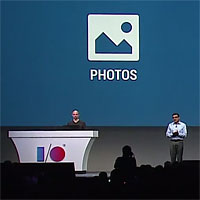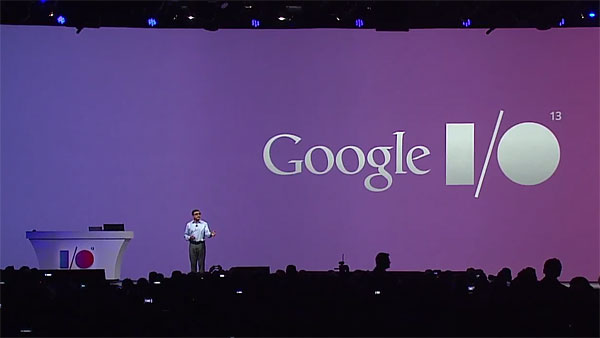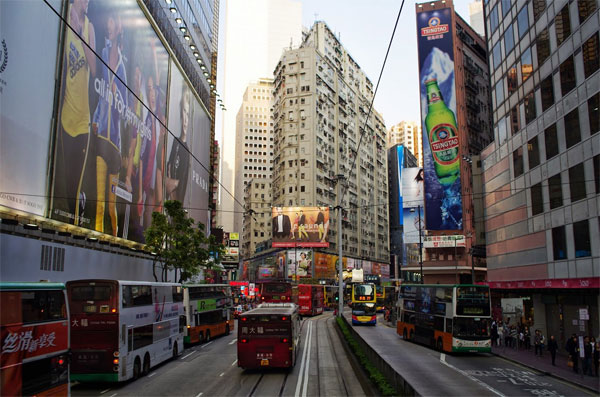Google I/O recapped: What’s new for photographers in Android, Google Plus, and more?
posted Friday, May 17, 2013 at 1:22 AM EDT

At its annual Google I/O developers conference, search giant Google unveiled its latest feature updates for the Android operating system, Chrome browser, Google Plus social networking service and more.
Although there were quite a few changes in Android and Chrome that will have a positive impact for both developers and end-users, there was little of note for photography fans in either product. For Google Plus -- a service that has long courted photographers -- Google had many improvements to offer, though, with more than a few of these likely based on technology from recent acquisition Nik Software.

No new Android flavors.
Perhaps surprisingly, the rumor mill predictions of a Jelly Bean or Key Lime Pie update for Android proved to be well wide of the mark. No new version of the OS was announced, with the changes instead being restricted to APIs that are shipped across a wide range of Android revisions going all the way back to 2010's Froyo (Android 2.2) release. While those on Nexus and other high-end devices may find the news a little disappointing, it's probably a positive for the Android community as a whole. Not only does it mean there's no new revision for developers to target when coding, it also ensures that owners of much earlier hardware receive these new features on their devices. (In fact, Google's decision to focus on APIs could be seen as a tacit admission that lengthy availability delays for major OS updates, as well as the fragmentation caused as many recent devices simply fail to receive updates altogether aren't good for users.)
Lots of love for Google Plus.
But we digress. Returning to the photo-centric news, Google Plus has received a significant overhaul that's already gone live for many users, if not all of them. (It wasn't entirely clear from the keynote speech whether there's a staggered rollout under way as often happens with social networking rival Facebook, or the update is simply a matter of a flicked switch at the Googleplex, gifting every user with the new features instantaneously. If your account hasn't yet been updated, though, it clearly will be soon, and we're already seeing the new features on the official Imaging Resource Google Plus page.
Timeline's twin.
So, what's new? Well, perhaps most obviously there's a rather Facebook Timeline-esque multi-column layout, although unlike the two-column design provided by Facebook, this will scale to as many columns as fit on your particular display. The interface is also less static than that of Facebook -- not only does it resize, but individual posts act as if they were on cards that can be "flipped over" to see related content. To enable this related content feature, Google now automatically determines the content of posts, before hashtagging them on your behalf -- and impressively, it can recognize landmarks in your photos.
Hashtags.
In the example given by Google's senior vice president of engineering, Vic Gundotra, an image containing the Eiffel Tower is uploaded to Google Plus without any geotags or text mentioning what the image contains, and yet the post is automatically hashtagged as a picture of the Eiffel Tower. Tapping on the hashtag flips the post "card" over, letting you see other Eiffel Tower photos from Google Plus users. Cool stuff, but how does Google determine which related content you should see? According to Gundotra, the content shown is specific to you -- it's determined not only based on the importance of the source, but also on its social proximity to you. In other words, you're more likely to see Eiffel Tower photos from your friends and pages you follow than you would be, if you didn't know or follow them. If Google gets the hashtag wrong -- or you simply don't like the fact that your images are being tagged -- you're given the option to delete a tag from a post, and to disable tagging of individual posts or globally.
The Datacenter Darkroom.
Google clearly continues to see photos as a key focus of its Plus service, and the company looks to have integrated much of the technology it received in last year's purchase of Nik Software to provide a big step forward in photo sharing convenience for the typical casual photographer. Many of the new features in this area will, perhaps, not be terribly exciting to pros, but realistically it's the great unwashed that Google needs to attract if it wants to seriously challenge the well-entrenched Facebook. The company specifically called out photography's labor-intensive nature as being a problem for the casual shooter, and it's obviously put a lot of effort into reducing that workload on Google Plus.
Google no longer provides simply a way to backup and share your images. They're now processed automatically for you on upload, with a number of key changes made both to help with organization, and to make the images as attractive as possible. In Gundotra's words, with Plus "your darkroom is now a datacenter". The important thing from the end-users' standpoint is that these tools can be completely hands-off. As Gundotra pointed out, even relatively intuitive photo editing tools can seem like a bewildering array of knobs and dials to the uninitiated.
Hassle-free organization.
The organization feature in particular looks to be rather impressive. If you upload a huge raft of images -- say, after an overseas vacation or a weekend trip -- Google will now filter through those images and select what it feels to be the best shots, using a number of criterion. The lesser images aren't discarded, but they're moved to the background somewhat in Plus' interface, available only if you look for them. Blurry shots are hidden, as are those with poor exposures, and all but the best-ranked shot in a series of similar images. Images containing faces -- and especially, smiling faces -- are featured for you, as are those containing recognized landmarks. Gundotra also suggested that after being trained by hundreds of human raters picking attractive images, its algorithms can now recognize good aesthetics, and automatically promote those shots in your gallery. And, as you'd expect, the face detection functionality also recognizes individual faces, and will promote shots containing the people likely to be of most importance to you -- those in your Family circle.
Automatic adjustments.
Calling upon a well-known quote from Ansel Adams -- "You don't take a photograph, you make it." -- Gundotra demonstrated another key addition to Google Plus' photo feature set: the ability to automatically tweak images on your behalf. Again, you can still access the original, unaltered image simply by clicking on the "Enhanced" icon, and if you're not happy with the changes made you can disable the feature on a per-photo or global basis. For the average snapshooter, though, the many changes made will likely satisfy. Google tweaks include tonal distribution, skin softening, noise reduction, structure, white balance, vignetting, sharpening, red-eye removal, and more, and again the algorithms are said to have been tuned to account for human tastes.
The face detection functionality in particular looks impressive. Gundotra states that it can detect the hairline, skin, eyes, teeth, glasses, and jewelry of each subject located in an image, and then take account of these to ensure that only areas of skin are smoothed by skin softening, and that other effects such as structure and tonal enhancement are also applied appropriately. Other features act much as you'd expect: noise reduction cleans up chrominance and luminance noise and grain, structure boosts saturation and local contrast (seeming to have a particularly strong effect on blues such as skies and sea), and vignetting darkens the image corners to draw your attention to the central subject.
Auto Awesome.
There's also another set of tools Google refers to as Auto Awesome, all of which apply to groups of images. The first of these is rather reminiscent of technology from Scalado, acquired by Nokia last year and now available in the Windows 8-powered Lumia 925 smartphone, although it operates automatically without user intervention. The Smile tool will analyze multiple similar images, looking for smiling faces, and then combine the best smiles from each image to make a single, smile-filled image. Mix, meanwhile, creates a multiple-image collage of portrait shots. Motion effect overlays similar images to create an animated output image, presumably using Google's WebP image format. There's also the fairly ubiquitous high-dynamic range image function that's built into many cameras these days, and a panorama function that cleverly recognizes panned shots of the same scene and creates a single stitched image automatically.
According to Google, all these relatively computer-intensive features have already been applied across its database of Google Plus images, and so have been switched on straight away, with no need to go back and manually enable the functionality or re-upload your images. And of course, your full-resolution original images remain available as well, with Google now hosting up to 15 gigabytes of full-res originals per Plus account, along with unlimited standard-sized images.
And the rest.
While the remainder of Google's keynote didn't have too much to offer for photographers, there were also a couple of interesting changes in Google search and the Google Now feature found on recent Android smartphones, as well as the rival iOS operating system. Both can now search your own personal image collections, if you've opted into this feature, letting you quickly call up specific images with a simple search on variables like location and time. This is perhaps doubly impressive on the smartphone, where a spoken search makes the process even more intuitive. (You can use a verbal search in Chrome too, but it's much more likely that you'll find yourself on a machine without a microphone, whereas every smartphone offers a microphone already and most lack a physical keyboard.)
In all, though, it's clearly Google Plus that has been the main focus for this round of updates. Whether the changes are enough to persuade users to jump ship from Facebook remains to be seen, but certainly Google now has some photographic tools in its arsenal that the social networking heavyweight thus-far lacks.



